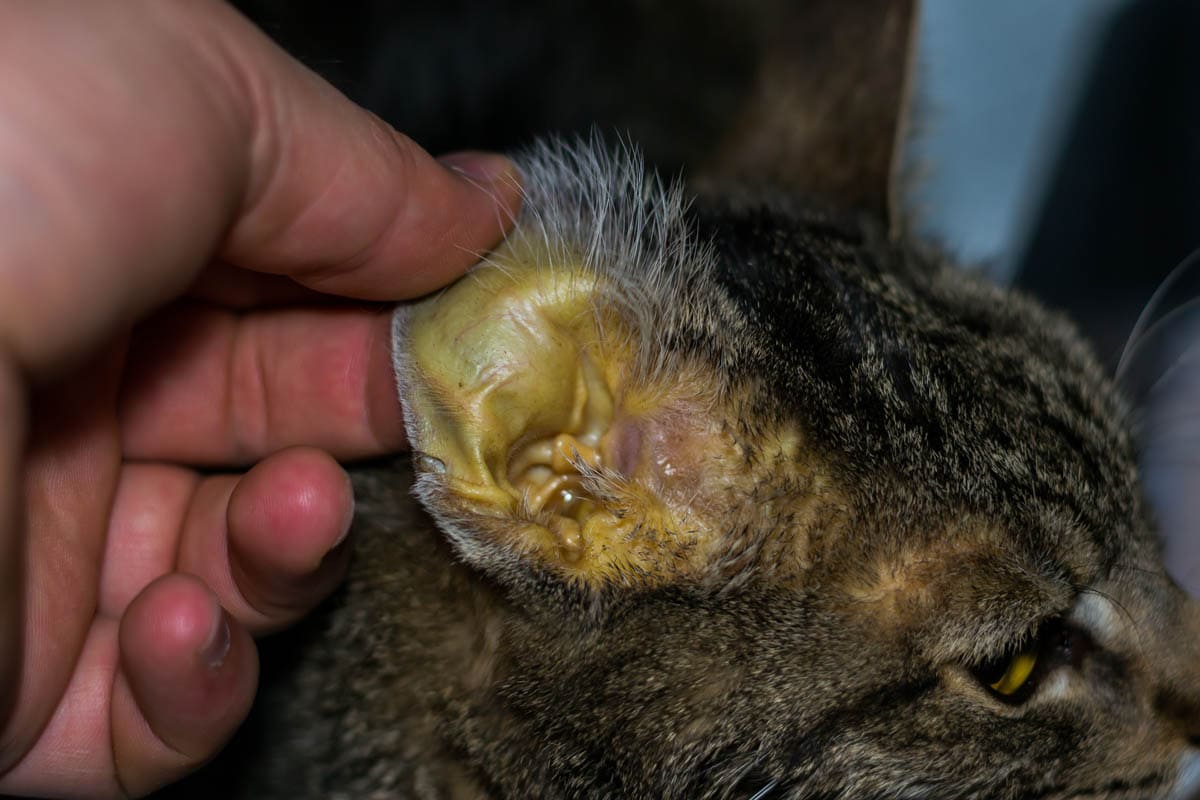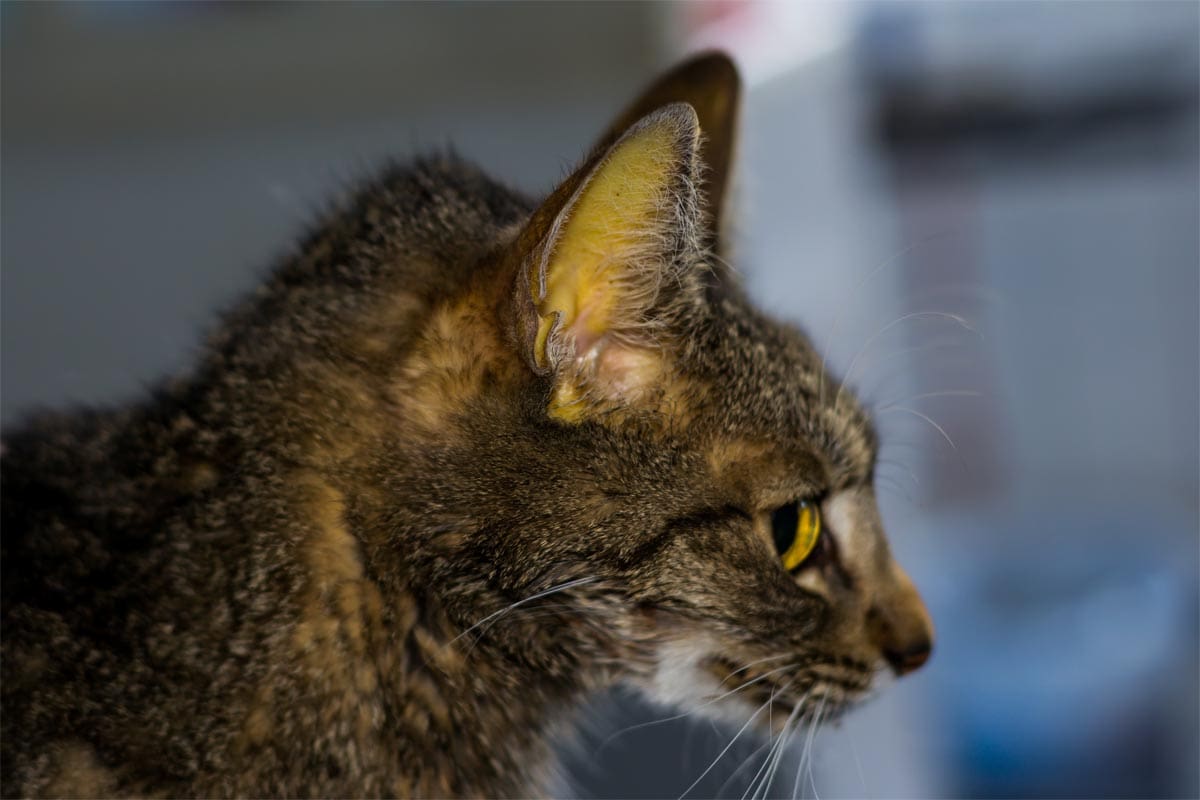What is jaundice?
Also known as icterus, jaundice is a condition characterised by a yellowing of the skin, whites of the eyes and mucous membranes (gums) due to increased levels of bilirubin in the blood.
Bilirubin is an orange-yellow pigment of bile that is the result of the breakdown of heme, the iron portion of red blood cells. Old or defective red blood cells are processed by the macrophages (located in the spleen and liver) and broken down into heme and globulin. Heme is metabolised into bilirubin. At this stage, it is unconjugated meaning it is not water-soluble. The unconjugated bilirubin is bound to albumin (a water-soluble protein) and is transported to the liver where it is conjugated (made water-soluble). From there is then transported to the gallbladder and then it is emptied into the intestine where it is converted to urobilinogen by bacteria and passed out of the body via the stool.
Causes
Jaundice is a symptom rather than a disease in itself and falls into three categories, prehepatic, hepatic and posthepatic. This can help your veterinarian to narrow down a possible cause.
Pre-hepatic jaundice:
Also known as hemolytic jaundice, prehepatic jaundice occurs due to an increase in the breakdown of red blood cells which results in higher than normal levels of bilirubin in the blood. This occurs before the blood reaches the liver.
- Blood type incompatibility due to maternal antibodies in the milk attacking the newborn kitten’s red blood cells or incompatible blood transfusion.
- Hemobartonellosis, a parasitic blood infection caused by an unusual type of bacteria known as mycoplasma. The parasite attaches to the wall of red blood cells and in an attempt to get rid of the parasite, the red blood cells are also destroyed by the cat’s own immune system.
- Heinz body anemia due to ingestion of certain medications or onion toxicity. This condition may also occur as a result of a systemic disease such as hyperthyroidism or diabetes.
Hepatic jaundice:
This occurs when there is damage or disease to the liver, affecting its ability to process bilirubin. Hepatic jaundice is the most common form to occur in cats.
- Hepatitis is an inflammation of the liver with several causes including bacterial or viral infection.
- Cholangitis/cholangiohepatitis: Inflammation of the liver and biliary tract.
- Infection including feline infectious peritonitis, leptospirosis and toxoplasma gondii.
- Toxins (such as poisons and certain medications).
- Hepatic lipidosis.
- Cancer.
Post-hepatic jaundice:
This type of jaundice occurs after the blood has passed through the liver.
- Gallstone.
- Pancreatitis.
- Bile duct obstruction to the liver, also known as cholestasis.
- Liver parasites.
- Cancer.
Symptoms

Yellowing of the skin, mucous membranes, and whites of the eyes. Jaundice may be hard to see on the skin of dark coloured eyes but will be noticeable on the gums and whites of the eyes.
Other symptoms may also be present and will depend on the underlying cause of jaundice:
- Vomiting
- Diarrhea
- Lethargy
- Anorexia (loss of appetite)
- Abdominal pain and/or distension
- Breathing difficulty such as open-mouthed breathing, rapid breathing or laboured breathing
- Dark coloured urine due to increased levels of bilirubin in the urine.
- Increased thirst and urination
Diagnosis
Your veterinarian will perform a physical examination of your cat and obtain a medical history from you, including other symptoms you may have noticed, any toxins or medications your cat may have ingested.
Diagnostic workup:
- Biochemical profile, complete blood count, and urinalysis to evaluate the blood for signs of anemia, changes to the red blood cell structures, urine concentration, and levels of bilirubin in the urine. These tests can help your veterinarian determine if the cause of jaundice is pre-hepatic, how the liver is functioning (elevated liver enzymes), and evaluate for blood parasites.
- X-rays or ultrasound to check the size and shape of the liver and check tumours, obstructions of the biliary tract, and gallstones.
- Serologic tests to check for infection such as FIV, FIP, FeLV, and toxoplasmosis.
- Liver biopsy to help determine the cause of liver disease.
- Coombs test to check for immune-mediated destruction of the red blood cells.
Treatment
The goal of treatment is to treat the underlying cause and provide supportive care while the cat recovers.
Hemobartonellosis: Antibiotics and steroids to kill the bacteria and reduce the immune-mediated response.
Poisoning: Gastric decontamination where possible as well as activated charcoal to bind to the toxin and prevent further absorption. Supportive care will also be necessary, including fluids and nutritional support.
Biliary tract obstruction: Surgery to remove the obstruction.
Cancer: Surgery and or chemotherapy/radiation therapy to kill or shrink the tumour and any remaining cancer cells.
Hepatic lipidosis: Aggressive nutritional support involves feeding a high-calorie, high protein diet and if necessary, a feeding tube.
Viral infections: Supportive care while the cat mounts its own immune response. This will include nutritional support and fluid therapy. In some cases, antibiotics may be prescribed to help with secondary bacterial infections as cats with FIV and FeLV have weakened immune systems and are more prone to developing secondary infections.
Hepatitis: Corticosteroids to reduce inflammation and analgesics to control pain. Other treatments may include fluid therapy to treat dehydration and correct electrolyte imbalances, SAMe (S-adenosylmethionine) is a naturally occurring compound in the body. Nutritional supplementation of SAMe can help to support the damaged liver by increasing levels of glutathione, a powerful antioxidant that helps the liver to remove drugs and toxins.
Supportive care for jaundiced cats:
In addition to the above treatments, supportive care is also important, which may include:
- Blood transfusion to treat a severely anemic cat.
- Supportive care will also be necessary, such as hospitalisation, rest, administration of intravenous fluids, and nutritional support.

